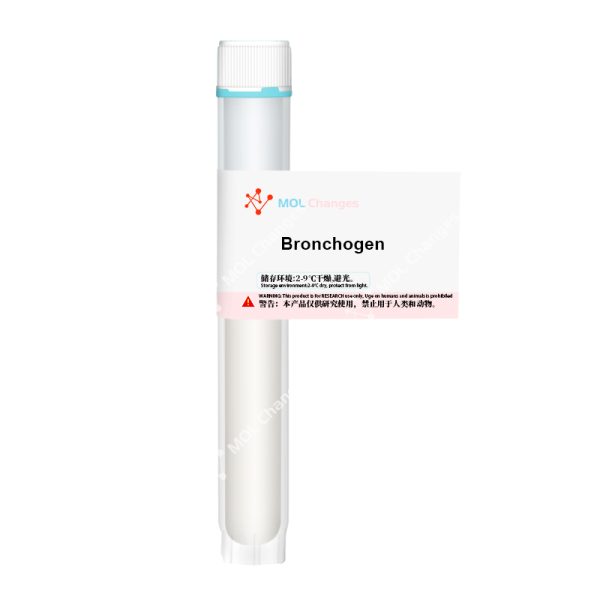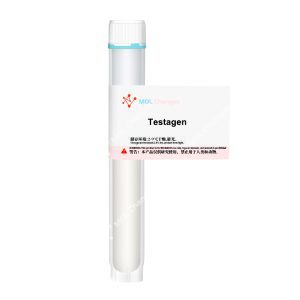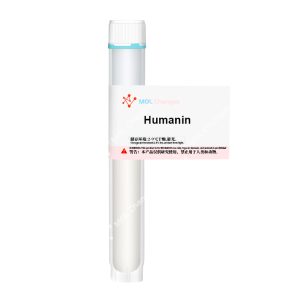Bronchogen is a bioactive short peptide composed of four amino acids; a member of the epigenetic regulatory peptides family. Initially developed by a research team at the Institute of Bioregulation and Gerontology in St. Petersburg, Russia, it exerts primarily protective and reparative effects on lung tissue.
Regulation of gene expression and subsequent protein synthesis are the key mechanisms through which these effects are mediated.
Sequence
Ala-Glu-Asp-Leu
CAS Number
/
Molecular Formula
C18H30N4O9
Molecular Weight
446.45
Research Of Bronchogen Peptide
1.Chromatin-Targeted Action of Bronchogen in Restoring Pulmonary Function
Studies show that Bronchogen specifically binds to histones (H1, H2b, H3, H4 being primary examples) and DNA; epigenetic regulation of lung function related genes being the focus.
Experimental models have demonstrated restorative effects – acute bacterial pneumonia, various forms of chronic pulmonary fibrosis, and multiple types of toxic lung injury.
Improving both morphology and function of bronchial epithelial cells is a consistent outcome of this treatment.
The mechanism of action itself is multifaceted, epigenetic regulation being the central pillar, cellular function and tissue homeostasis following in as a direct result.
2.Gene Expression Regulation: Anti-inflammatory and Anti-fibrotic Effects
Modulating transcriptional activity is Bronchogen’s most critical mechanism.
Preclinical work has and is continually identifying various genes influenced by it.
Upregulation of transcription factors (and marker genes) associated with alveolar epithelial differentiation is well documented (NKX2-1, FOX family members being prime examples).
Secretory proteins such as SCGB1A1/3A2 are also affected.
Structural integrity of the alveolus and surfactant production are maintained by these genes.
Inflammatory related genes (CD79A, NOS-3 if memory serves) are similarly regulated – excessive or uncontrolled inflammation is a major pathological end point of lung disease, and Bronchogen appears to at least partially mitigate it.
Anti-inflammatory and anti-fibrotic effects of Bronchogen are now well supported in a range of models.
3.Cell Proliferation and Differentiation
Studies indicate Bronchogen influences genes associated with the cell cycle and apoptosis.
Specifically, it modulates the expression of a cell proliferation marker gene, MKI67 (Ki67), and various anti-apoptotic genes such as MCL1; the tumor suppressor gene TP53 (p53) being one of the more extensively studied examples.
This regulatory action serves to promote tissue repair after injury, with suppression of uncontrolled abnormal cell proliferation being a desired end point⁵.
Currently Bronchogen is primarily marketed as a dietary supplement or peptide bioregulator – a ‘peptide complex for the bronchopulmonary system’ if you will.
Adjunct therapy for chronic bronchitis, Chronic obstructive pulmonary disease (COPD) and bronchial asthma is its most common use; restoring (at least partial) bronchial mucosal function, pulmonary function improvement, increased surfactant production and subsequently reversing various age related declines in lung function are the aimed for outcomes.
Combining Bronchogen with other peptides is being investigated, post COVID-19 lung function recovery being one specific area of interest; immune and alveolar type repair are both believed to be regulated by it.
Clinical validation of all current and future uses is still pending.
COA
HPLC
MS








